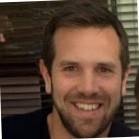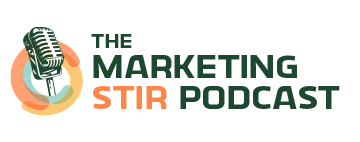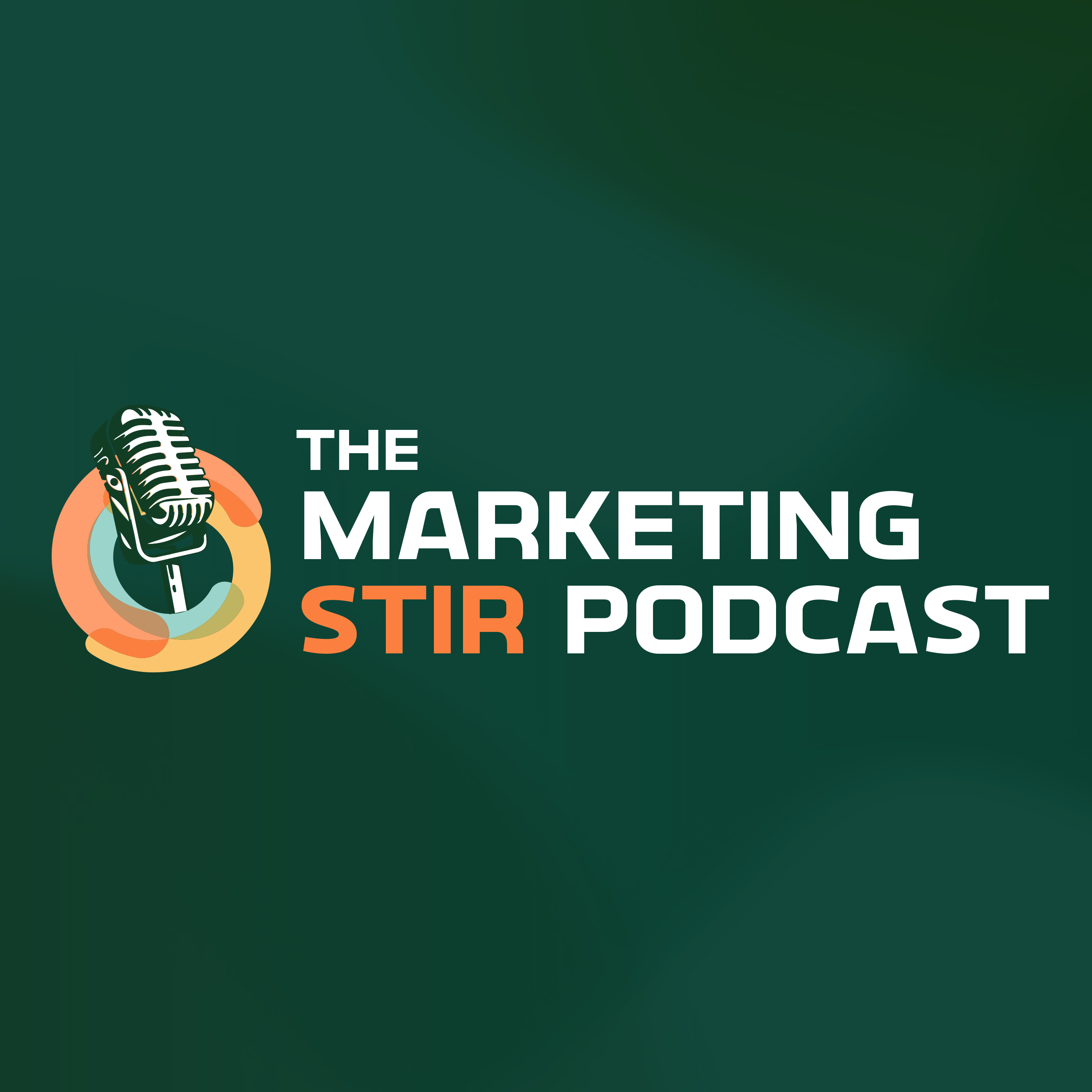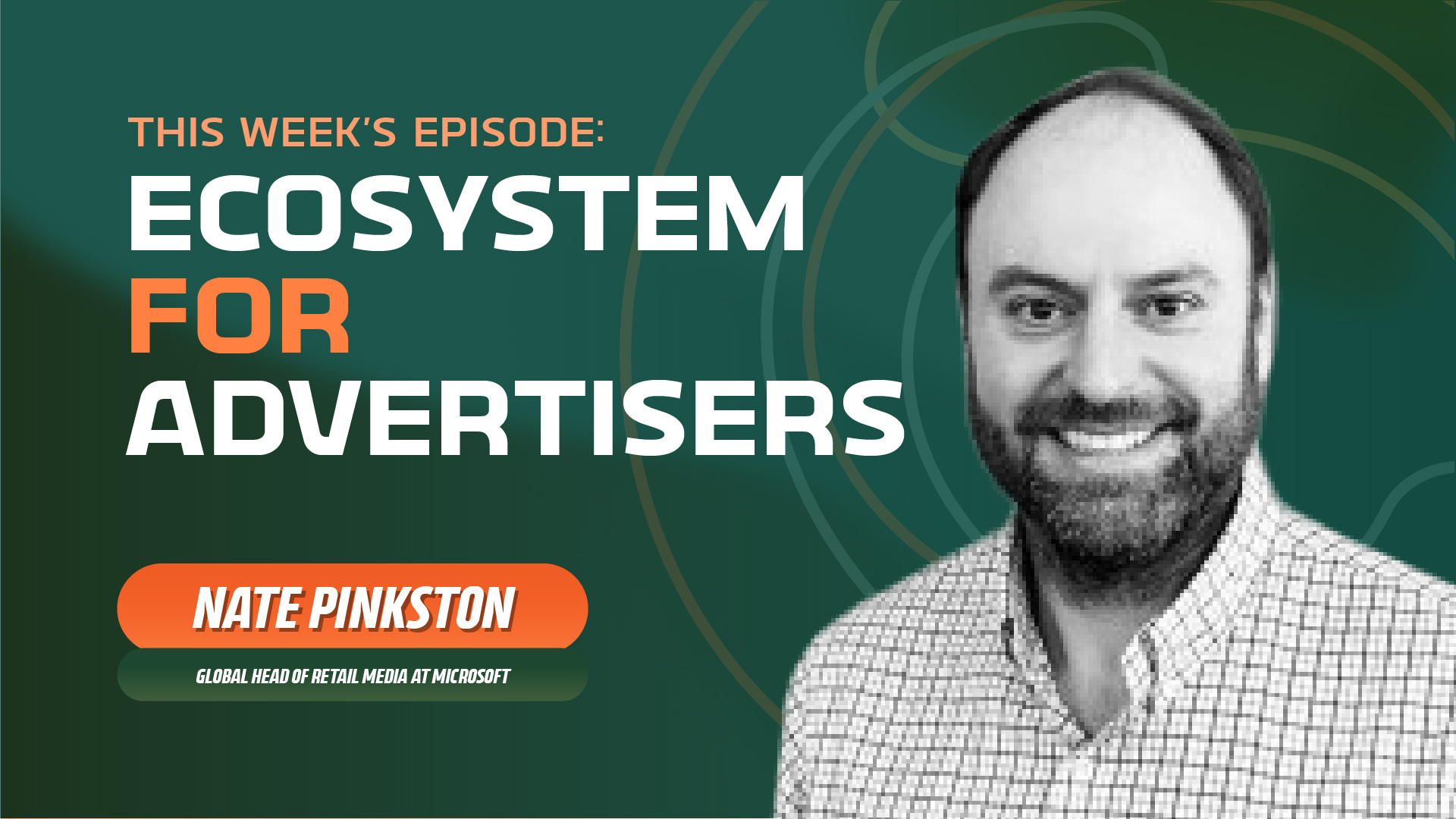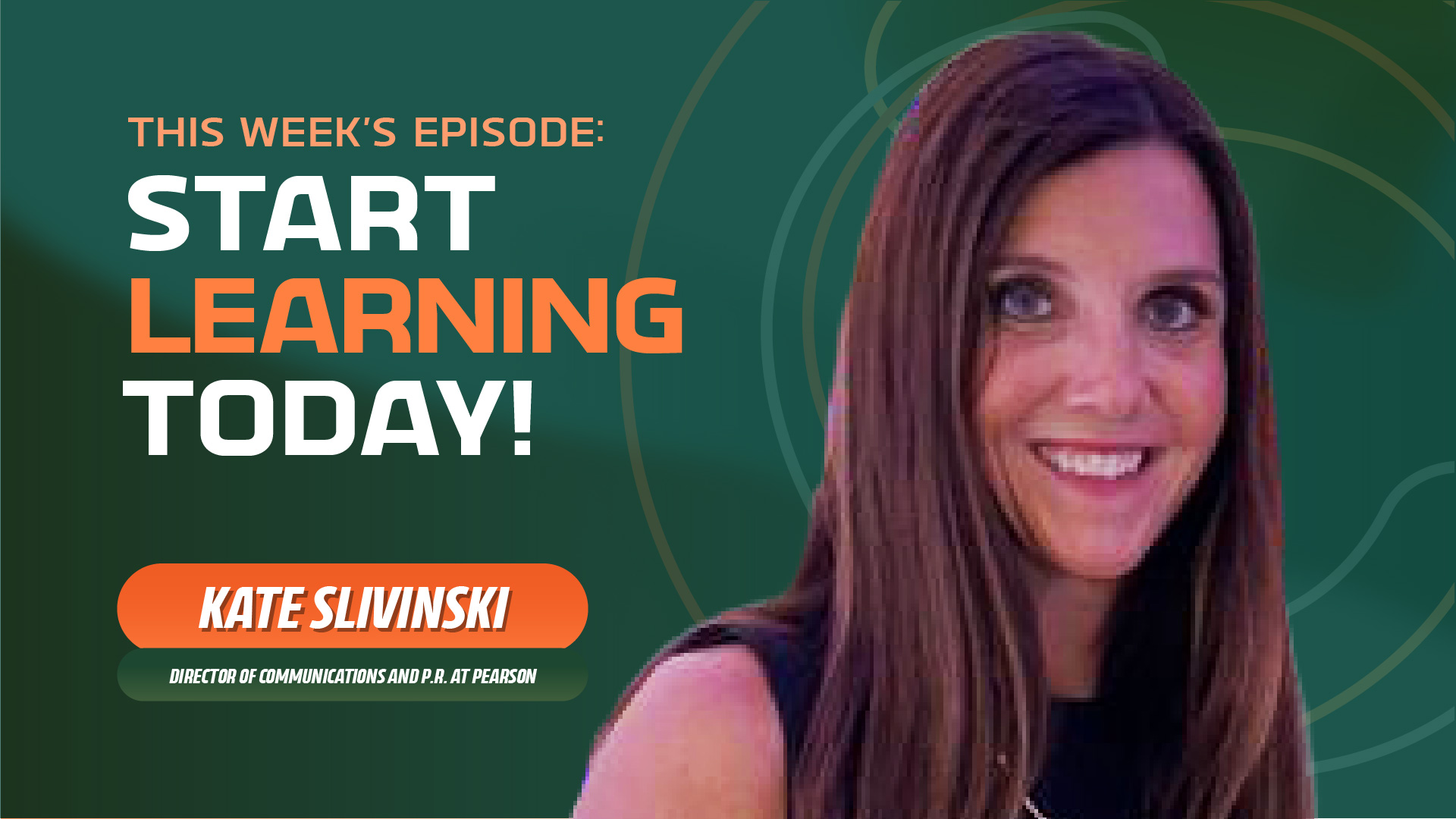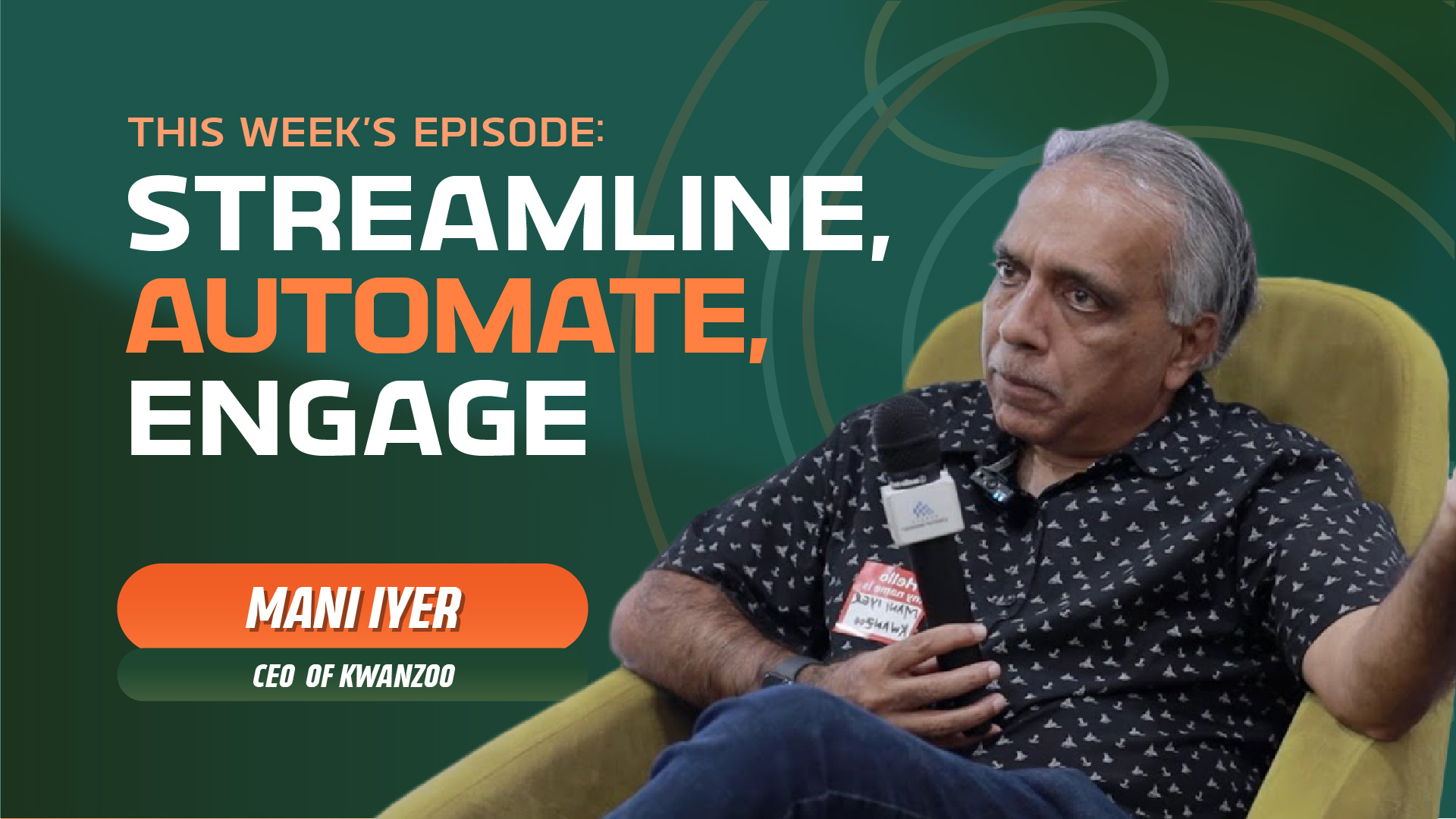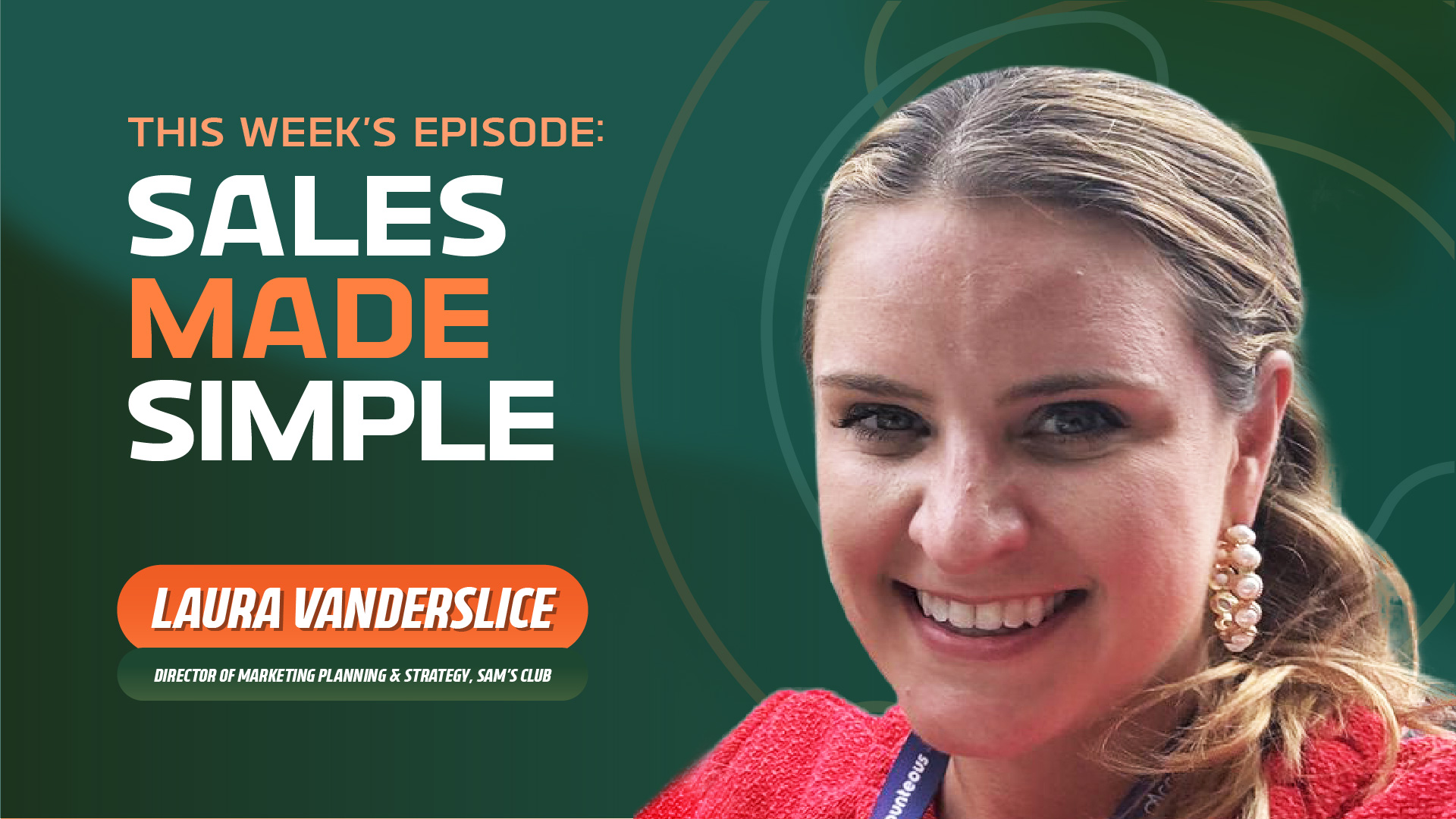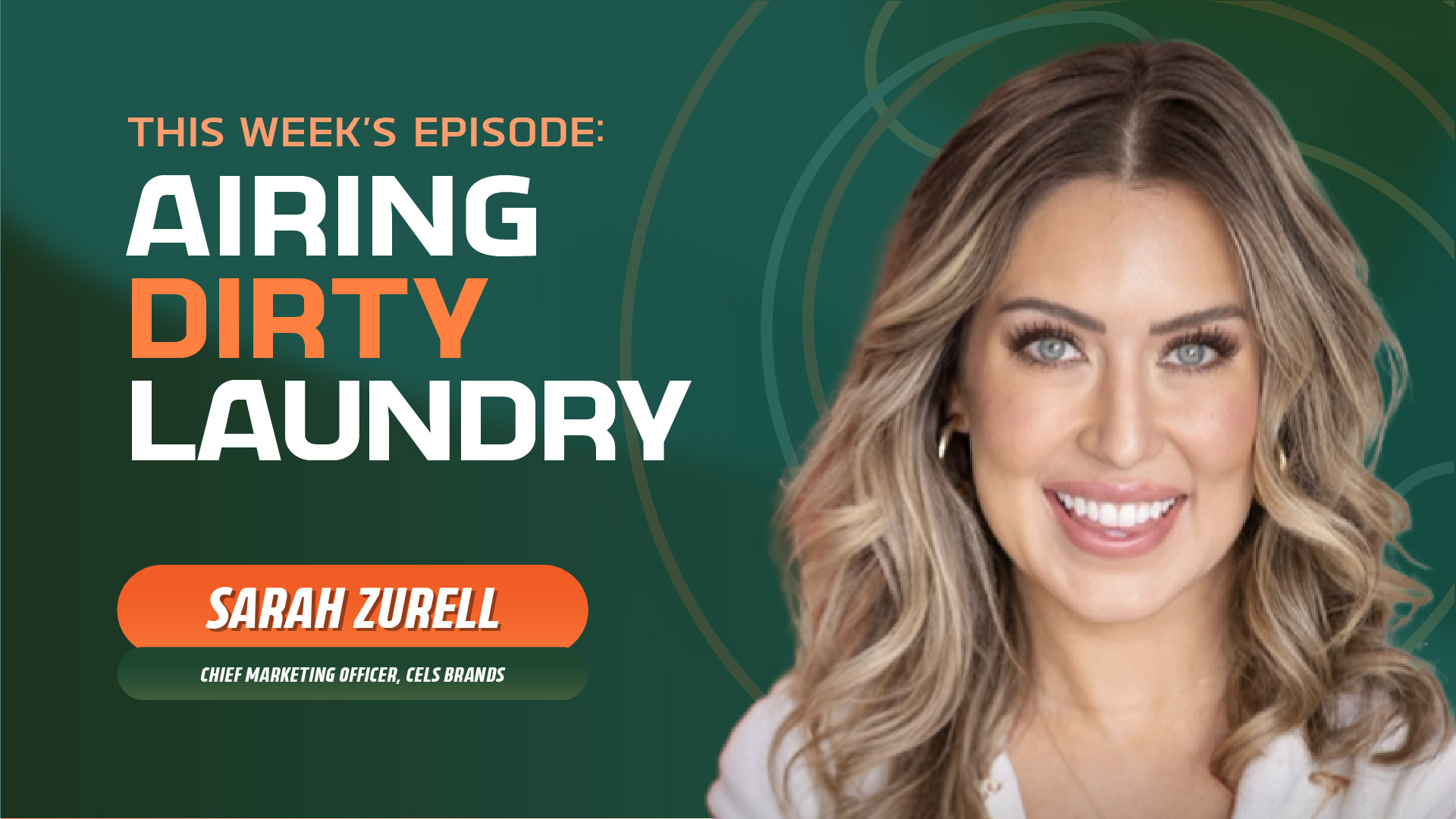Karl Wells (Chief Subscriptions Officer, Dow Jones) - Consumer Side of the House
- 0.5
- 1
- 1.25
- 1.5
- 1.75
- 2
Ben: Welcome to the Marketing Stir podcast by Stirista, probably the most entertaining marketing podcast you're going to put in your ears. I'm Ben, the associate producer here at Stirista. The goal of this podcast is to chat with industry leaders to get their take on the current challenges of the market, and we'll have a little fun along the way. AJ and Vincent chat with Karl Wells, Chief Subscriptions Officer at Dow Jones. He talks about how marketing in different countries and continents makes for an interesting challenge while staying relevant and appealing to each different audience. Vincent looks forward to warm San Antonio weather in the winter, and Ajay pronounces Vincent's last name correctly. Give it a listen.
Vincent Pietrafesa: Ladies and gentlemen, welcome to another episode of Stirista's The Marketing Stir. I of course am your overly happy class of 1996 class happiest, I was, ladies and gentlemen. Here it still transcends till now. It so good to be back here. Of course, Stirista, who are we? Let's get that out of the way. We are a marketing technology company. We focus on identity. We have our own business to business data, our own business to consumer data. Companies utilize us for our data. They want to either email to that data, get new customers, new webinar signups, new subscribers. We also own our own DSP called Adster. We do connected TV OTT, email me vincent @ stirista. com. That is how confident I am that we can help. The other thing I'm confident in, ladies and gentlemen, is my in chief, my CEO, Mr. Ajay Gupta. What's going on?
Ajay Gupta: Vincent, that's the first you got my name.
Vincent Pietrafesa: Yeah, I did. I know. It's like I was going back and sometimes it rolls off the tongue naturally. Sometimes I have to, because I've known you for so many years.
Ajay Gupta: Yeah.
Vincent Pietrafesa: I'll probably come back to AJ. I probably will. I've known you for 11 years now while we're both in our twenties. Well, were we? No, I wasn't in my twenties. You I think were.
Ajay Gupta: Yeah. Yeah. I used to be in my twenties once. It's been-
Vincent Pietrafesa: Once, many moons ago at the conferences we met each other, so yeah. AJ, Ajay sometimes, but still my last name you haven't gotten it's okay. We'll get there one day.
Ajay Gupta: Pietrafesa.
Vincent Pietrafesa: You know what? You must have looked that up. You have an Italian friend who's in visiting and you got that one right. Yes it is. You know, Pietrafesa, Pietrafesa. I'll take either, just like AJ, Ajay. Right? Either one. Good to see you again. The holiday party is right around the corner. It is. We're we're getting together. This episode will probably come out afterwards, so hopefully I didn't do anything stupid at the holiday party, but it'll be good to see you in San Antonio. It's going to be 87 degrees. It's the only time I'm like, you know what? I'll come out to San Antonio.
Ajay Gupta: Yeah. I was talking to Aaron Grote, who's based out of Minnesota, and he told me it was negative two there, so this is no comparison. We're fortunate to have good weather.
Vincent Pietrafesa: That's exactly right. Aaron Grote is our, he heads up our digital division and he's not coming in. He said, " I wish I was coming in because it's 87 degrees and it's negative two in Minnesota." Yeah, that's insane. That is absolutely insane. It's was like 32 degrees over here. I had my ear warmer on, just my ear warmer because I don't want to mess up my hair. I have a scarf. It's crazy, and I was freezing. I can't imagine negative two degrees, but looking forward to seeing you. Let me talk about this next guest, Ajay. This is a first on many levels here at The Marketing Stir. This is a first where we have someone of his title, Chief Subscription Officer. I was like, that is a cool title, but more cool than that is why he's on the podcast. I had asked him to be on the podcast. My son, Hudson, goes to a school, he's four years old and he goes to this little school that it costs a lot of money, but anyway, that's a whole other podcast. We'll talk about that all the time. Anyway, the dads get together. You meet different dads, you hang out, I was like, I like this guy, he's a great guy. I like all of the dads. We got to talking, I was like, " What do you do?" What people do for a living. All the other dads, finance, finance, finance. Me in marketing, and Karl mentioned he's at Dow Jones and the chief subscription officer. I'm like, wow, that's amazing. I said, " We do a podcast and we have people on. I would love to hear your story." Here we are. We made it happen. We're very happy. Ladies and gentlemen, I'd love to welcome, a warm Marketing Stir welcome, the chief subscription officer at Dow Jones. Karl Wells, what's going on, Karl?
Karl Wells: Hey Vince. Thank you. Thanks for having me on. Hey Ajay, how are you doing?
Vincent Pietrafesa: Doing great.
Ajay Gupta: Hello Karl.
Vincent Pietrafesa: We are happy to have you, Karl. That is a unique story, I think. A, your title, we'll get to that in a moment. Just a bunch of dads hanging out and talking, and we made this happen. We made it happen.
Karl Wells: We've got good taste in schools, Vince.
Vincent Pietrafesa: We do. I know. I say that, it is a great taste, it is a great school. I always joke around about anything. It's New York City. My coffee I had earlier was like$7. 89. Anyway. It's awesome to have you, Karl. It's great getting to know you. Then again, like you said, we started talking and were like, tell me about what you do. Now, chief subscription officer, I've never heard of that before, and our listeners are getting to hear that, which we're happy to introduce them to. Talk to us about the role at Dow Jones, the chief subscription officer. I'd love to understand some of the publications and the properties of Dow Jones as well.
Karl Wells: Yeah. Why don't I start with Dow Jones then as a business? I guess the most common mis- attribution of Dow Jones is that people think we're the index and we're not. We're not the index. We are a global provider of news and business information to decision makers around the world. We have both a consumer offering, so we have the kind of flagship is The Wall Street Journal. We also have Barron's. We have MarketWatch. We have Manchin Global and Financial News, which is out of London. Then we also have professional, so our B2B offerings too, which are the news wires. We have Factiva and we have a risk and compliance business. Yeah, two sides to the house, B2C and B2B. The chief subscriptions officer role lives on the consumer side of the house.
Vincent Pietrafesa: Interesting. Karl, we always like to ask this question for all of our guests, is how you got into I guess you'd call it marketing, right? Part of what you're doing is marketing and getting people interested, you and your team, to the different publications there. How did you get into this business?
Karl Wells: Yeah, you're right. It's a function of marketing. How did I get into marketing? I was actually doing a very nondescript degree at university called human geography, and thankfully there was something useful in that degree through our kind of electives, the classes that you sit that aren't core to your degree. Marketing was one of them, and I was like, oh man, I should have done a marketing degree. This is right in my ballpark. Then there was a bit of inspiration from my sister. My sister, she moved down to London and she got a job for PepsiCo, and PepsiCo owned Walker's Crisps, the finest chip in the world, if you ask me. She became a brand manager there. She was a bit older than me, she's like six years older than me, so I could kind of, the theory that I was studying at university, you could kind of see play out in practice in terms of what she was doing. That was really the inspiration. Then kind of left university, went down to London and that's really where the journey started. It started at a media agency actually, back in 2003.
Ajay Gupta: Karl, you've lived in New York, Sydney and the UK. How does marketing compare across these different places?
Karl Wells: It's a great question, and the short answer is very different. Very different markets. I'll give you a couple of examples, I suppose. Well, the overarching theme I think is that it's easier to get brand fame and it's much less expensive to reach kind of brand fame in the UK and Australia obviously than it is in the states. I mean, Australia is a country of 25 million people, so it's smaller than California, it's smaller than Texas, it's just a bit bigger than Florida. It's much easier to reach a high proportion of the country in one swoop of a digital and TV campaign, and with relatively small budgets when you think of it on a global level versus what would be spent in the states. I guess the UK is somewhere in between, I'd say. It's kind of between the US and Australia. You can see I did my homework here on population stats, and this is the link there to my degree, by the way. Human geography was a lot about population and people. I'm reliably told by Google that the UK has a similar population of California and Texas combined. Still, a drop in the ocean relative to the states. I guess one of the intricacies that you kind of have to be careful of in the UK is just around the UK is made up of Scotland, Ireland, Northern Ireland, England and Wales, so as a marketer you kind of have to be tuned into the different kind of regional differences. Actually sometimes accents that you use in your marketing can sometimes put off certain audiences and be pleasing for others. Neutral accents is a good kind of tactic to use. In Australia, they just love to laugh, so just be funny. Humor is a huge part of marketing in Australia, and they have a lot of fun with it.
Ajay Gupta: In terms of the marketing side of things, what are some of the channels that are working for you and some of the strategies that are currently working?
Karl Wells: I guess as a publisher, we have no shortage of assets to market. Our journalism, in some respects you've got to think about our product, it's like our product starts the day almost empty, and every day our product changes, depending on what's in the news cycle. From a marketing perspective, it's less about do we have something to market, it's more about an embarrassment of riches. What should we market? There's an art and a bit of science to that, in terms of what we choose to market and to whom. Our kind of structure is we have an in house kind of media team and an in house creative team on the performance marketing side, and on the bigger kind of above the line brand marketing we work with agencies. On the performance marketing side, those two areas are very closely kind of linked to the output of the newsroom, because ultimately our product is what's in the news. It's a machine in terms of distribution. It's a paid distribution machine. There's upwards of 20, 30 different ads, and ads being both a combination of driving a direct response, but also showcasing specific articles that have been written that day or that week. I guess one of the kind of challenges I think we've found over the years is that to reach the same number of people in all those distinct audience groups, your channels have to start to diversify. I think the days of saying you stick Facebook and Twitter on a media plan and a bit of YouTube and jobs are good, I think is changing. There's much more I think diversity now just within the social space of where people are showing up. Then you've really got to think about how does the brand show up in that environment? Obviously it's going to be different for TikTok versus Reddit, versus Twitter, versus YouTube, versus Facebook. A real diversification I think of channels, which is kind of driving a diversification of spend and making our jobs more interesting but maybe a little harder than it was say five, six years ago, when it was probably arguably more focused.
Vincent Pietrafesa: Karl, you're talking about five or six years ago and some of the marketing that has brought you into today. Let's talk about the past two years. We love to address this. Well, we don't love to address it, but it is what it is, the past couple years during the pandemic, how has your marketing changed? Where did you have to pivot, new channels, channels that maybe didn't work anymore? Would love to hear about that.
Karl Wells: Yeah. It's a good question. I think first and foremost the pandemic kind of led to a flight to quality, we would say. People wanted factual, trusted information sources, and we leaned into that. Trust is kind of at the heart of what we do as an organization. You've got to trust your source, and that helps you kind of trust your decisions. You'll make the right decision if you trust the information that's coming from the source that you're reading. In those two years, if you just think about it yourself, how many micro decisions did you have to make in that time period? We're still doing it now, right? The current campaign out in the world for The Wall Street Journal is trust your decisions. You'll see on billboards it'll say, "Trust your source. Trust your decisions." Then that's kind of the brand headline, but then you can work quite nicely with content where you almost pose questions. Do I stay in the city or do I move to the suburbs? Do I go back to the workplace or do I stay working from home? There's all these kind of micro decisions that people are having to make, and I think the role of our, we kind of find a connection between the questions that consumers are asking and then the role that our journalism can play within that. That really is through that kind of pillar of trust and decision making. That's kind of the campaign that's out in the world today.
Vincent Pietrafesa: I love that campaign. I kind of want, another question during this time, how people are consuming media, how people are consuming publications in general. I always feel that, because commuting, a lot of that commuting has been cut down. On the train, people physically reading a Wall Street Journal, looking at their phones and reading the news on their way in to work. How has that changed? What have you noticed about it?
Karl Wells: I mean, in the early kind of part of the pandemic, when we were all in lockdowns, interestingly, it's a well known thing that print circulation globally and within the US over the years has fallen as consumption patterns have changed and become digitized. I think during the pandemic it was interesting, we actually didn't see any drop in circulation. Circulation was pretty much flat. There was definitely almost a renaissance for the analog experience in that sense, which kind of makes sense, I suppose, when you're glued onto Zoom calls all day, that you actually might appreciate the kind of analog experience. I think it also shows that in some respects commuting is a consumption pit stop for a newspaper, but it's also a barrier to reading a newspaper. Because if you're sat behind of a car steering wheel, you're on a train, you're on a bus, it's practically more difficult to read a newspaper. I think as people's commutes kind of got eradicated, it probably made the prospect of reading news on a printed sense easier. That's the print side. I think on the digital side it's interesting when you kind of look at the consumption trends. You used to see a big spike in the morning, a spike at lunch time and a spike when people got home from work. Those spikes still exist, but I'd say they're probably more like hills than mountains. The consumption patterns of people were definitely stretched out across the day as it became more easy, I suppose, to access something other than work. I mean, does that mean that people were spending less time working and more time reading the journal, and Barron's and MarketWatch? Hopefully. I mean, we saw obviously a surge in demand over that time period, as I said, that flight to quality resources that we provide became really important during that first three months, and honestly even since then the demand for journalism is still pretty high.
Ajay Gupta: Karl, I grew up in India, where even now when I visit newspapers are a common part of everybody's day. Almost every family gets a couple of different newspapers that come in print. It's great to see when I'm back in India.
Karl Wells: Yeah, morning and afternoon, right? Is that right?
Ajay Gupta: Yup.
Karl Wells: We did a bit of work into India, and saw that trend still existed, which was nice to see.
Ajay Gupta: Yeah. In terms of kind of the surge in subscription you were talking about, do major news events, do they affect subscription? If something happens in the world, do you see a kind of positive correlation with subscriptions going up perhaps?
Karl Wells: Yes. It's one of those actually I think a lot of people in my type of role, in publishing, you can kind of, it's a predicament, you can go one of two ways. You could say that a mass news event, like the election or COVID, should be a time where you sample more of your journalism. You've got all these new audiences coming into your products, that's the time to sample because these people won't be ready to buy yet. The flip side of that argument is that you've got suddenly a mass demand for your product, tighten everything, put everything behind a paywall to make people pay. You do, you see kind of slightly different responses to major news events, depending on the publisher. I think for us, COVID was very much a time when we also saw ourselves as almost a service to the public, and so putting everything behind a paywall was not the right thing to do. We actually did the opposite, we created a lot of free resources to people. People had a lot of questions, and we had a lot of answers, so the kind of Q& A element of what should I do, what does this mean, became resources that we put in front of the paywall. I think it's a fine balance between giving people enough access to swim around your product and read our journalism, but not so much that it means that they don't want to come and subscribe. There is a science to paywalls, which I could probably talk to you about for an hour, but don't worry, I won't. Paywalls are obviously a key part of the technology stack of any good publisher, but they help you kind of almost balance that need for sampling but also with a need to drive sales.
Ajay Gupta: Talking a little bit more about kind of the science of subscription, do you think there's an art to increasing subscriptions as well?
Karl Wells: That's a great question. I mean, I would say, listen, you need both. A good subscription business, especially in publishing, is an element of art and an element of science. I guess if I go back in time, the boom in subscriptions in publishing is still relatively new. Going back six years, from when I joined Dow Jones, is not very long in terms of time but it is in subscriptions. I think back then the context of subscriptions was that there's lots of data. This big data trend was kind of there. You knew a little about a lot of people as a publisher. I think that what we saw as an opportunity quite early on was that this is actually just seams of gold that you can, with the right type of talent in terms of data science, means that you could probably start creating a lot more science to what you do by mining that big data using machine learning models to help provide good decisions. An example of that would be our paywall works on a propensity model. We effectively predict whether you're going to subscribe or not when you visit, based on a whole bunch of different variables. That allows us to kind of flex the experience, knowing that Vin's an absolute advocate of The Wall Street Journal coming every day but won't get his wallet out and pay, we'll continue to keep asking Vin to pay for a subscription until he does. Whereas if someone else, for those that visit the journal less frequently, the propensity model would recognize that you're unlikely to pay and therefore sampling will become a bigger part of the experience. That's really where kind of big data meets machine learning, meets application of machine learning, meets paywall. That didn't exist six years ago, and that's a good example, I suppose, of science over art.
Vincent Pietrafesa: Karl, I wanted to talk about, in our industry, we are seeing a resurgence in direct mail, or in essence print in a way. People are at home. Business executives are at home, and a good mail piece is really doing the job and it makes a lot of people in our industry happy. I wanted to talk about the future as far as the consumption of news is. Is print media dead? Because let me ask, the actual print for me, when I do read, and there's Ajay laughing. It's a joke on this show. Okay, I do read, Ajay, I promise. I like print. I like a book. I like a newspaper. I will pick up The Wall Street Journal, I will read that. Talk to me about the future of consumption. Is print dead?
Karl Wells: Two questions. Is print dead? No, absolutely not. I think there's going to be a thriving market for print for years to come. As I said before, all trends come with a counter trend. For every extra minute that you're going to spend attached to Netflix or to a Zoom call, there's probably going to be a counter trend somewhere that drives people into the enjoyment of analog. Vinyl records would be a good example of that. No, it's definitely not dead. I think as a publisher there is kind of pressure being put on the distribution chain of print. It's getting harder to serve such a wide and vast geography that is the United States of America. Supply chain issues is something that's not helping our industry. In terms of consumer demand, there's 100% enough consumer demand to keep us going. I think to answer your second part of the question, the future of news. If I got my crystal ball out, I would say that some of the trends that are driving the future of news, I'd probably think of it as twofold. One, kind of a proliferation of formats. News was always started as text, and then it progressed into images, video and audio. In some respects, those four ways of consuming news have always existed, but now for a publisher you kind of have to think about all four in the context of what would have been a newspaper. You've got arguably distinct audiences that want, some want everything, some just want one part of that format, and some want others. It's definitely getting more complicated in terms of what format you publish on. Obviously audio and video would be 100% things that are going to be here to stay that we will continue to embrace. Then you've also got then kind of an increase in consumption channels. If we're going back to newspapers, what was the main competitor of a newspaper? Probably the radio, or a TV news channel. Now there's been so much kind of proliferation in consumption channels. Whether that's Google News, it's Apple News +, Substack, Facebook, Twitter. You've just got a whole long tail of ways to consume news that it kind of puts more emphasis I guess on the publisher to have a really, excuse my language, but a shit hot owned and operated platform that actually the experience is as much of a reason you want to subscribe as the actual journalism itself. I think that's where I guess publishers probably still hold an upper hand maybe on some of the other kind of aggregated type platforms where you're not going there for the experience, you're going there to basically peruse a news headline.
Vincent Pietrafesa: No, it's an interesting look about the future there. Karl, the passion about what you do comes through. I want to talk about what are some favorite things about your job? Something we rarely ask on this podcast, but curious to hear what are some of your favorite aspects of your work?
Karl Wells: Whenever I get asked this question, I always start with the fact that I get paid to read the news every day, which is 100% a perk and a privilege. You end up becoming I guess more worldly of your understanding of what's happening in the world because the news is your product, and you've got to know your product in order to be able to market it and then get someone to pay for it. Number one, without a shadow of a doubt, is being able to actually... I mean, I have a passion for news anyway, and this just fuels that passion. That's the number one. I think secondly, I am a bit of a nerd when it comes to subscriptions. I find it a fascinating industry. It's a growing industry, and it's an industry I think that's still got a lot of runway in terms of its maturity and its sophistication. That blend, we talked before, but that blend of art and science, where publishing is so much about feel and gut instinct, and the science part helps kind of make that gut instinct and that feel kind of even more effective, I suppose. I like the art and the science. I like the nerdy- ness of the science part of that. The news industry, there's never a dull day in news, it changes every day.
Vincent Pietrafesa: Remind me, if we did a dad trivia night, I know who I'm going with, my man Karl, who reads the news every day. That's it. I have the upper hand now.
Karl Wells: Well, Vin, my wife and I, you know Helen, we do the Times of London's quiz most days, and every Saturday. We go up against my parents, and I like to say we're on a winning streak at the moment. Mum and dad, you've got to start doing a bit more reading of your news because we're beating you, because they'll be treated. They love this podcast.
Vincent Pietrafesa: I love it. If we did a couples night, I'm not going against you and Helen. My wife's knowledgeable. I'll give her a shout out. She doesn't listen to the podcast. Anyway. That's good to know. Ajay, you were my former partner, Karl's my new one. We're good.
Ajay Gupta: Well, with a title like chief subscription officer, you expect him to be good at trivia. Karl, you've been at Dow Jones for quite a while. What's been kind of a shining moment or a highlight for you?
Karl Wells: I guess in the more recent time I think how we I guess adapted to working from home. It was one of those experiments, where most experiments you have a control group of 90% and a test group of 10%, whereas the pandemic was almost the flip side of that, where suddenly everyone went into the test group. Everyone was working from home. I think we've proven as a organization that we can function remotely, which is not something that's necessarily previously in the DNA of a news company, so much of that is about interaction and being with people. I'm kind of proud of my organization, but also of my team in terms of how we did that. I think also in more recent history we launched a new subscription business during the last two years. MarketWatch, which is one of our consumer brands, we launched to start with really, just as an experiment, to see whether there was value in it from a paid subscription perspective. Fast forward a year and that's doing incredibly well as a subscription business. Then I guess going further afield, going back a few more years. I referenced it before, but I think the advancements in our paywall strategy and in the paywall product that we've effectively created, using big data, using machine learning, et cetera, to kind of power our consumer brands is definitely a highlight that lot of us share at Dow Jones.
Ajay Gupta: Karl, one of our signature question is based on the fact that, because of your title, we assume you get a lot of unsolicited messages. What we'd love to know is, what's a message that gets your attention and what's a pet peeve that really makes you mad when you get an email or a LinkedIn message like that?
Karl Wells: Pet peeve's an easy one, spell my name with a C and there's no way you'll get a response. Mum and dad named me Karl with a K for a reason, and they purposely did not choose Carl with a C. No offense to any Carls out there with a C, but if you call me with a C, you won't get a response. I think that's the pet peeve. In terms of what captures my attention, I think relevancy, when someone has obviously done a bit of digging beyond just who you're connected with on your LinkedIn profile. If it's marketing, an understanding of what that campaign is and what role they could see X product or service could help enhance. I think now we've probably all received so many cut and paste job that you can kind of see through a cut and paste job. The worst of the worst is when you say to your colleague, " Oh, I got three from so and so on LinkedIn." They said, " Oh yeah, I got exactly the same message. They just changed my name and sent it to us both." That's probably the biggest no- no for me.
Vincent Pietrafesa: Karl, talking to you before and our producing team, I'd love to understand the customer bow tie. Talk to me what that is.
Karl Wells: Yeah, the customer bow tie is kind of a funnel put on its side. What we didn't like about the funnel is that the funnel only really kind of talked to acquisition, so how you acquire customers. The bow tie is kind of a reflection of the customer journey that people go on to become a subscriber and then their life cycle beyond the point of purchase. On the left hand side of the bow tie is kind of your traditional funnel, how you attract audiences, how you drive consideration. The middle of the bow tie is the conversion point, that's effectively our paywall, our shop pages and how we turn interest into sales. Then as you go out on the other side of the bow, we put a lot of emphasis on onboarding customers. What's your experience from the point that you've said, " Yes, I'd like a subscription, please." How do we make it easy for you to then start exploring the different parts of our product that you've now got access to? Big emphasis on welcome and onboarding, and then we've got kind of in life engagement, so what are the prompts that we put out into the customer base that will drive more engagement. Then all the way through to what we call retain, so what do we do at the point when someone wants to cancel, and the cancellation journey and process. In some respects, when we look at the customer bow tie, it's also kind of a reflection of how we structure ourselves too. We have kind of expertise in different parts of the customer bow tie within the team kind of really obsessing about different parts of that customer journey.
Vincent Pietrafesa: I love that. Another first on The Marketing Stir. Karl, one more marketing question and then we want to get into some personal stuff, personal questions. Just about what you like to do personally. That question always scares people when I say it. Talk to me about, how do you lean into trust in your marketing?
Karl Wells: Yeah. I mean, as I said, trust is kind of a key pillar of what we do. It's a key pillar of our journalism. Our translation of that is trust your decisions, which is kind of the campaign that's out in the world at the moment for The Wall Street Journal. I think what I like about that campaign is that it's both timely, because it is timely now, given what's going on in the world, but it's also timeless. I think that regardless of whether you're in a pandemic or not, decision making is at the heart of what human beings do. Being an information source to help people make the right decisions, trust is really at the forefront of that. I think that's as relevant for our consumer brands as it is for our professional brands. Trust is really the foundation to all of that.
Vincent Pietrafesa: I love it. Karl, you're here in New York City with me as well. What do you like doing in your spare time for fun, some of your hobbies?
Karl Wells: I guess given my experience on Saturday evening, which for those that are listening, we had the privilege of seeing Vin in his standup role. We went to a comedy club and watched Vin do his magic. I suppose now I'd say that I'm in the beginning of a comedy relationship and making comedy nights a regular night out. Before Saturday night, my hobbies were playing golf badly. Really golf's just an excuse for a nice walk. That's something that I try and do in all of that free time that I have, which is not much. Then I like keeping fit. I'm a sucker for Barry's Bootcamp. You'll see me plodding up and down the West Side Highway running here in New York City. When I'm not doing that, I'm probably either taking the kids swimming or being made to watch Frozen 2 for the 1500th time with my four year old.
Vincent Pietrafesa: Exactly. You heard that here, Ajay, Karl came to a show on Saturday, saw me. I was like, I wonder if Karl will bring it up. If he does, I know it'll get a smile out of Ajay because he never believes it. I appreciate the kind words, Karl. This has been awesome. We really appreciate your time on The Marketing Stir podcast. Thank you so much. Ladies and gentlemen, one more time, that is the Chief Subscription Officer for Dow Jones. Dow Jones, Wall Street Journal, Barron's, MarketWatch, check them out. That's Karl Wells. I am Vincent Pietrafesa. That's Ajay Gupta. This has been another episode of Stirista's The Marketing Stir. Thank you so much. Talk soon.
Ben: Thanks for listening to The Marketing Stir podcast by Stirista. Please like, rate and subscribe. If you're interested in being a guest on the podcast, please email us at themarketingstir @ stirista. com, and thanks for listening.
DESCRIPTION
Ajay and Vincent chat with Karl Wells, Chief Subscriptions Officer at Dow Jones. He talks about how marketing in different countries and continents makes for an interesting challenge, staying relevant and appealing to each different audience. Vincent looks forward to warm San Antonio weather in the winter, and Ajay pronounces Vincent's last name correctly.
Today's Host
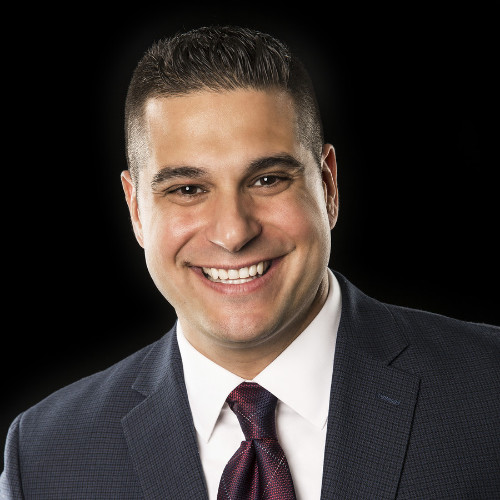
Vincent Pietrafesa
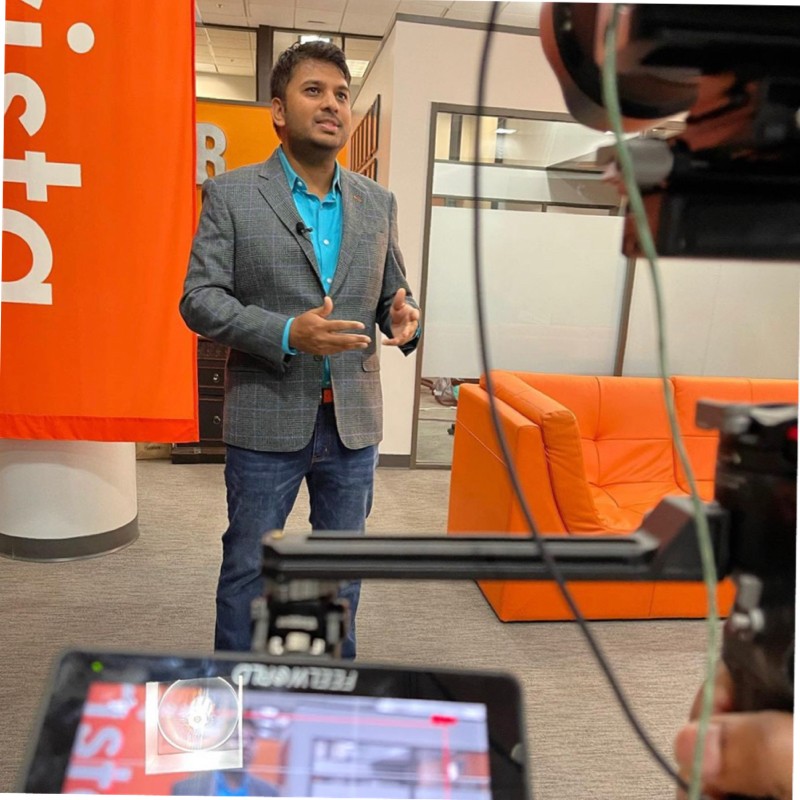
Ajay Gupta
Today's Guests
